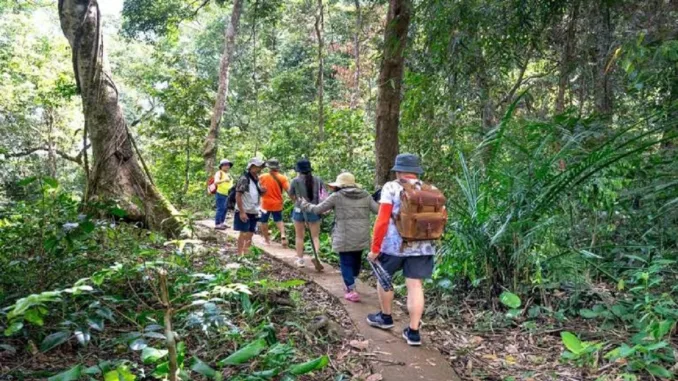
On August 16, 2023, while India was awakening from its Independence Day celebrations, tragic news about a massive ecological disaster in Himachal Pradesh overwhelmed the nation. Unfortunately, this is not the first time India’s favorite tourist destination has experienced a spate of calamities. In December 2022, a landslide struck Urni village in Kinnaur, and extreme climate events, floods, and land erosion have become commonplace. A study conducted by the Research and Advocacy organization ‘Gene Campaign’ revealed that the construction of hotels and infrastructure for tourism development had resulted in extensive deforestation in Himachal. According to their findings, over 80,000 trees were felled to make way for highways and power plants.
Citing The Global Development Research Centre (GDRC), a study that underscores the importance of safeguarding species-rich ecosystems, Pradip Shah, Founder and Director of Grow-Trees.com, points out, “A thriving ecosystem can create vibrant tourism hotspots. However, picturesque places bear the brunt of unsustainable tourism due to commercial constructions and deforestation caused by land clearing. Simla, once considered the crown jewel of hill stations, is today facing acute water scarcity. Joshimath in Uttarakhand has been facing land displacement, and this August, Mandi district became the epicenter of disaster when heavy rains and a torrential Beas river swept away houses and highways. “
The environmental expert, who popularised the concept of ‘Greet with Trees’ and ‘Tree Bank’ through Grow-Trees.com, added that mismanaged tourist influx could also impact local resources and infrastructure, including water, energy, and waste management.
“As per the statistics provided by ‘The World Counts,’ tourism contributes to more than 5 percent of global greenhouse gas emissions, and there is an anticipated 25 percent increase in carbon dioxide emissions from tourism by 2030 compared to 2016. Hence, there is a pressing need to devise strategies to address this issue, and one of the ideal solutions is to plant more trees and manage waste responsibly,” said Mr Shah.
Asserting that trees serve as the ultimate CO2 storehouse, with the byproduct being oxygen production, a vital element for human life, Mr Shah said: “Trees also play a crucial role in restoring ecological balance. They provide sheltering habitats to birds and animals. Their roots stabilize soil and prevent erosion, which is particularly vital in tourist-heavy areas with fragile ecosystems.”
Also highlighting the importance of the UN’s ‘Decade of Ecosystem Restoration’ plan, which aims to plant One trillion trees by 2030, he said it is crucial to integrate sustainability into tourism.
“Popular tourist destinations tend to be overexploited for their natural resources and land, which is why sustainable tourism practices are the need of the hour. A collaborative effort among various stakeholders, including administrators, residents, and local businesses, must ensure that environmental concerns are not sacrificed for commercial gains. Those actively promoting tourism growth should also devise policies supporting the environment. Replenishing degraded ecosystems with afforestation should be a central component of these proposed strategies,” concludes Mr Shah.






